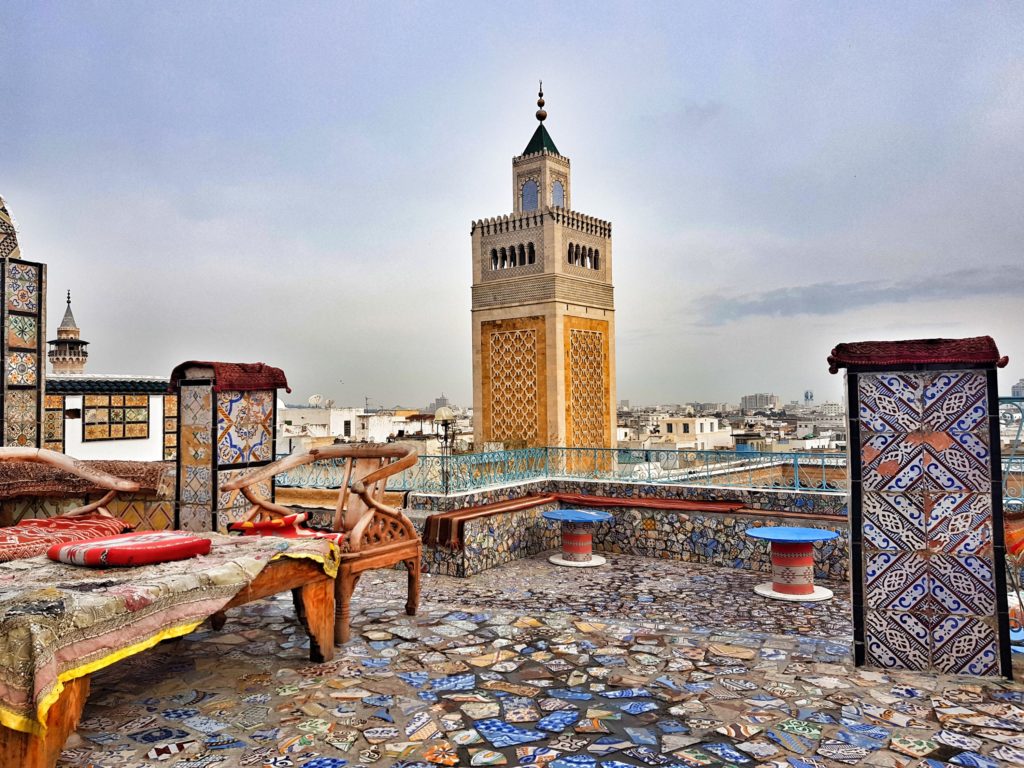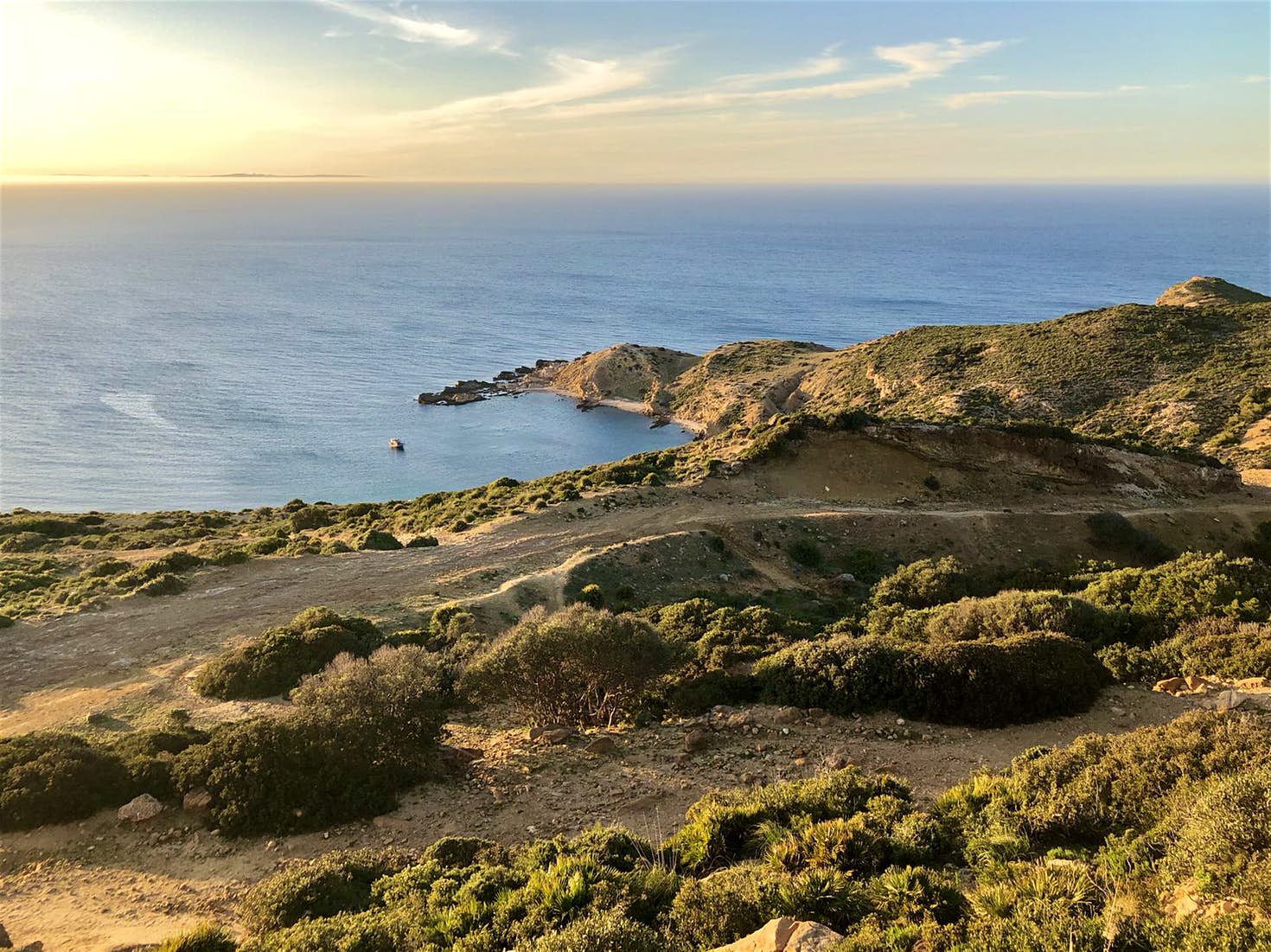Mobile-First Storytelling Workshop in Tunisia
April 15, 16, & 17, 2019
We are living in a mobile-first world. With non-stop access to their phones, people are watching — and engaging with — important stories that span the globe and cover a range of issues on Instagram, Snapchat and Facebook more than ever. But whether you’re a journalist, an activist, a communications officer at an NGO or just an avid traveler, creating compelling mobile-first stories that connect with your audience in a real way takes more than being #blessed.
This three-day intensive workshop, lead by former New York Times senior editor for digital storytelling, Erin Brown, will give you all the tools and techniques you need to bring your readers into an immersive experience on the platforms where they already spend their time — Instagram and Facebook.
We'll explore the rich history, culture and food of Tunisia while we learn how to write tight and compelling scripts for mobile-first stories, refine our photography and videography skills, and learn how to use platform tools to connect with our communities. We will dig into the ethics of covering the global community, the power and perils of cliché and how to avoid them, and how to avoid “the view from nowhere” while staying aware and informed on all sides of an issue. Erin will share strategies for growing an audience on mobile platforms and how to get that community to connect with your work elsewhere. We'll talk about pitching this kind of work to your editors or colleagues, creating sustainable workflows and archiving your work, all while enjoying the beauties of the southern Mediterranean.
Questions? Feel free to email me at erinclare.brown {at} gmail.com or scroll down for our FAQs
Keep scrolling for details…
DAY ONE — Tunis
Session one
The Case For Mobile Storytelling
Why should we be telling stories designed specifically for mobile? Why should be we making those stories on mobile phones? In the introduction to the course, we tackle the questions of what mobile storytelling is and why it is important. We’ll look at the trajectory of mobile growth, and talk about user experience.
Then, we’ll dive into what makes a story mobile first. (Mobile first stories: are direct and contained; feel intimate and personal; pull readers in right away and move quickly; and understand that text is the most flexible medium.) We will look at and critique examples from major news outlets as well as from independent journalists and storytellers. We’ll dissect them to uncover what works and what doesn’t. We will take note of everything from story pacing and length to the amount of text on a given slide.
Tea break
Session two
Mobile Story Arcs and Brainstorming Our Narrative
Once we’ve learned more about what makes for a good mobile-first story, we’ll dive into structuring our case story. We’ll look at and critique various examples for how to compose a story arc. We’ll talk about how to shift thinking away from the inverted pyramid or linear narrative to create a captivating story. And then we’ll dive into what we think our story arc may be for the piece we’ll work on the following day and create a storyboard.
Lunch at a local restaurant
Session three
Building A Story Through Images, Shooting for Mobile, and Intelligent Retrofitting
This is the most intensive of the sessions: It dives into the nuts and bolts of telling a story through images, and how to capture them using different techniques. The session focuses on the four major elements of visual storytelling : setting the scene, understanding the characters, building tension and emotion, and following the action. Within each of these themes, we will look at examples drawn from the best photojournalists around the world, then dive into learning a technique (composition, lighting, working with subjects, videography), trying each one out and looking at our own work. We’ll learn techniques to re-adjust our creative vision to a vertical frame, lightweight workflows for shooting in the field — either with traditional video equipment or on mobile — and how to do an “intelligent retrofit” so footage or images can be truly platform-agnostic.
Session four
In-The-Field Hacks and Storyboarding our Shoot
This quick session goes over in-the-field hacks gleaned from years of experience. We’ll prep our gear, do a quick visual storyboard of our shoot, and head home to get some sleep.
DAY TWO — SHOOT DAY
Session five — Golden hour in Sidi Bou Said & Carthage
Shooting the City
Working together in the field, we will shoot our story using all the techniques we’ve learned. We’ll start in the coastal towns of Carthage and Sidi Bou Said, where we’ll capture early morning light and explore the picturesque streets. Then we’ll wind through the streets of the medina and search for additional color to add to our stories.
Lunch in a local restaurant
Session six — Golden Hour in Korbous
Shooting in Nature
We’ll take a short drive to the nearby town of Korbous where we’ll visit a hot springs that flows directly into the Mediterranean sea, and practice capturing compelling images in nature.
DAY THREE — Tunis
Session seven
Assembly and Production
Armed with our knowledge and footage from the two previous days, we’ll get together and work on writing a script, selecting and editing our images and footage, and producing our story top to bottom. You’ll have hands-on help to master Insta if you’re a neophyte, and, don’t worry — I have a dummy handle we can load everything into so you don’t have to sully your personal brand with your first attempt.
Lunch in Tunis
Session eight
Thinking Strategically About Mobile Stories
This session will dive into the strategy behind mobile-first stories. We’ll cover topics like: developing a tone that balances authority with accessibility; developing a consistent visual voice; how to select the ‘native’ platform for a story, and when & how to retrofit it for other platforms; building trust with your audience, sourcing from them, and reflecting their efforts back to them; and planning an editorial calendar for mobile-first production.
We’ll also have time at the end of the day to go through ideas, story pitches, and any other additional bits we wanted more time with along the way.
Frequently Asked Questions
Q: Who is this workshop for? Do I have to be a journalist?
A: This workshop is ideal for anyone who wants to know how to tell stories on mobile platforms with more skill and finesse, whether you are a journalist, a communications specialist, or someone who owns a business and wants to be able to tell your own story better. The most important thing is that you have an interest in telling a compelling story and are open to trying new things.
Q: Does the workshop fee cover airfare and hotel?
A: The fee for the workshop does not cover airfare or a hotel. It does cover lunch all three days (plus copious snacks!) and transportation on day two. All other meals are the responsibility of the attendees.
Q: What’s the best way to get to Tunis?
A: We’ve found it is easiest — and cheapest — to book a round-trip flight to a major European hub, like Rome, Paris, Madrid, Lisbon or Copenhagen, and then booking roundtrip flights from that city to Tunis Carthage international airport. We saved several hundred dollars that way, and are spending a few beautiful days in Rome on our way home.
Q: Where should I stay in Tunis?
A: We left hotels up to our guests, so that they can book according to their comfort. There are plenty of incredible Airbnbs in Tunis. If you’re looking for neighborhood suggestions, we would recommend: La Marsa, Sidi Bou Said, Carthage or the Medina.
Q: Is Tunisia safe?
A: While Tunis is a relatively place to stay and travel, and is welcoming to its tourists, it is always advisable to take precautions when you’re traveling. Be smart! Don’t walk alone late at night (take taxis instead — they are very inexpensive), keep your money and valuables secured. But in general, there’s nothing to worry about traveling in Tunis.
Q: What if I don’t have an Instagram account?
A: We’ll get you all set up with one! This workshop is designed for all levels and abilities, and we’ll learn together and help one another get to where we need to be.
Q: Do I need any fancy equipment?
A: The short answer is — absolutely not. If you have a smartphone, you can make incredible stories. We will send out a list of optional supplies to bring (things like an extra battery pack and charging cable), but absolutely none of it is required.



